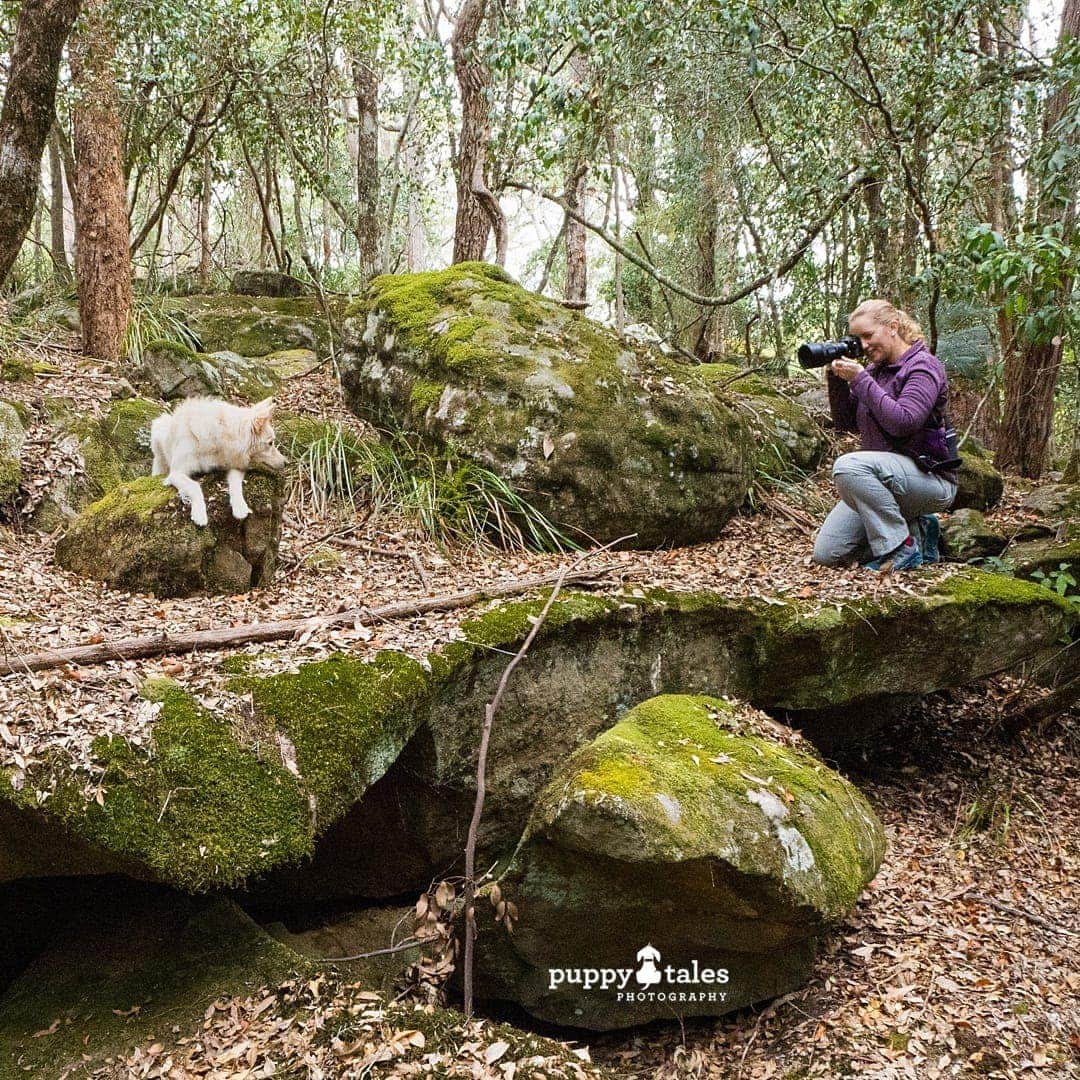How often has your dog run towards you with their eyes popping with excitement, tongue out, ears flapping, and you’ve thought, “That would make a great photo”?
The chances are in the time it takes to think about it, the moment has already passed. Therein lies an irony, because some of the most dramatic or stunning photos of dogs are those that capture a fleeting moment of a dog in motion.
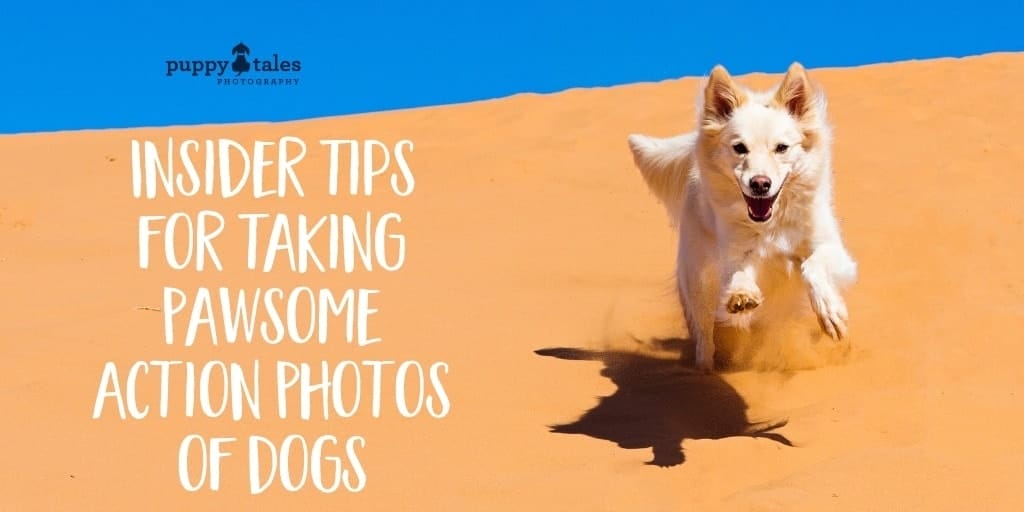
Let’s face it, if your dogs are anything like my dynamic duo, Keiko and Summer, the most static thing about them is the fur left on the soft furnishings. When awake, dogs are rarely still whether it’s nose-down sniffing in the dirt or full-pelt running in the park. Capturing that energy is an essential part of their character.
So let’s stop for a moment. How many different ways does your dog express the joy of motion? Running, jumping, spinning, rolling, trotting, pointing….the list goes on. Which is why it’s so apt that we talk about action photography with dogs.
Types of Action Photos
Action is action: Press the shutter and capture the moment: Right?
Well, not exactly!
Capturing dogs in motion is a artform and involves techniques differing to other styles of photography. Let’s consider this in more detail, starting with the different ways of capturing action.
1. Freezing the Action
This type of action photograph is the art of capturing the perfect still frame moment from within video footage reel. It’s where both the dog although moving, is sharply in focus, frozen in time, at the time of the photograph. The trick here is to have the fastest shutter speed possible, in order to minimize movement blur.
This type of picture can make a huge impact – such as the dog mid-stride, caught suspended in the air as if flying. Freeze-frame action can preserve near miraculous moments that seem to defy physics or are just plain jaw-droppingly breathtaking.
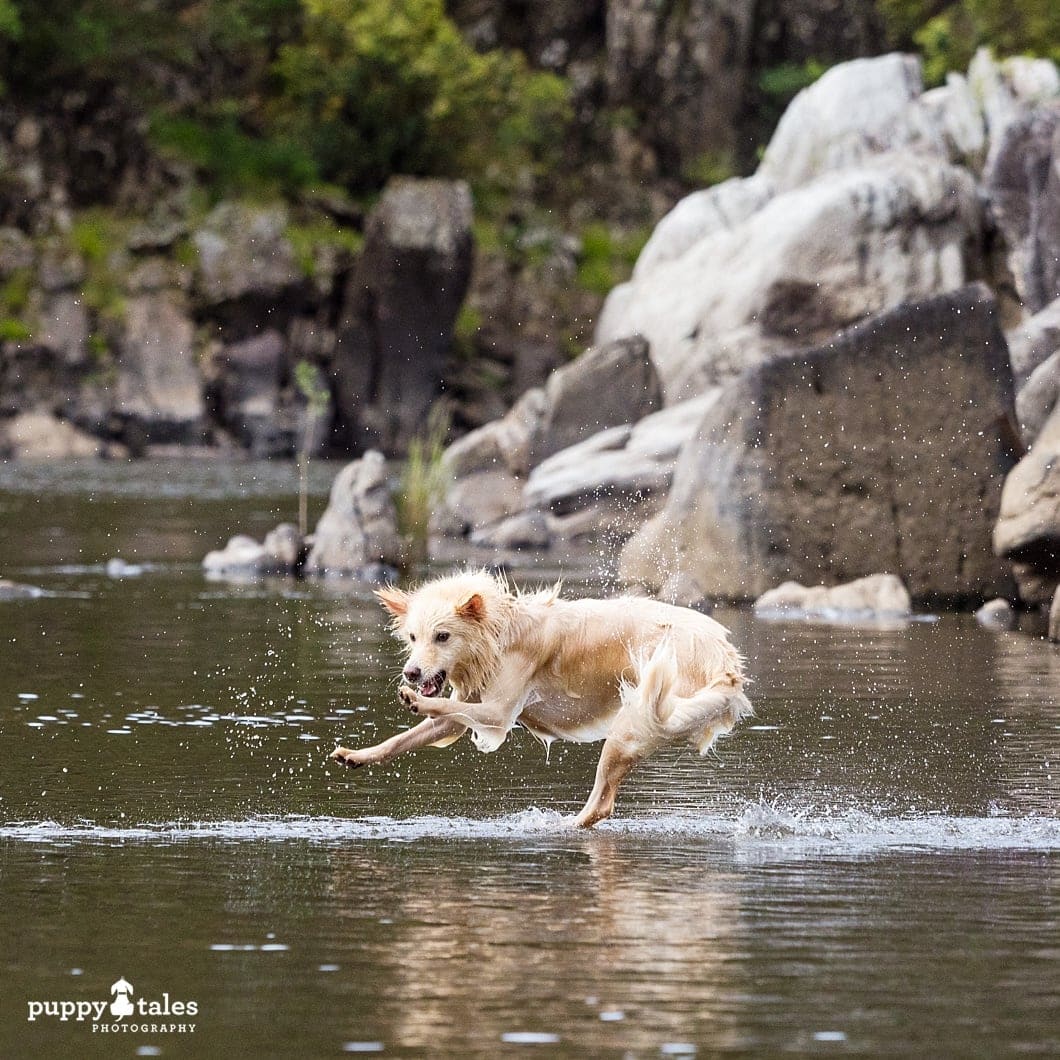
2. Motion Blur
This technique embraces a small amount of blurring of the subject or objects around the subject, to recreate the impression of movement in the photo. Examples, could be water lapping around a dog’s paws or grass whipping at their legs in a field of long grass.
Motion blur communicates a mood and I think best approached from a place of experimentation. Too much blur and you’ll have a confusing picture, not enough it could be mistaken for an ill-timed photograph.
There are two main techniques for capturing motion blur. When only part of the scene is in motion (for example, the sea) using a slower shutter speed. This allows the dog to remain sharp but the waves to blur. Alternatively, when the object is in motion, you can move the camera slightly to create background blur.
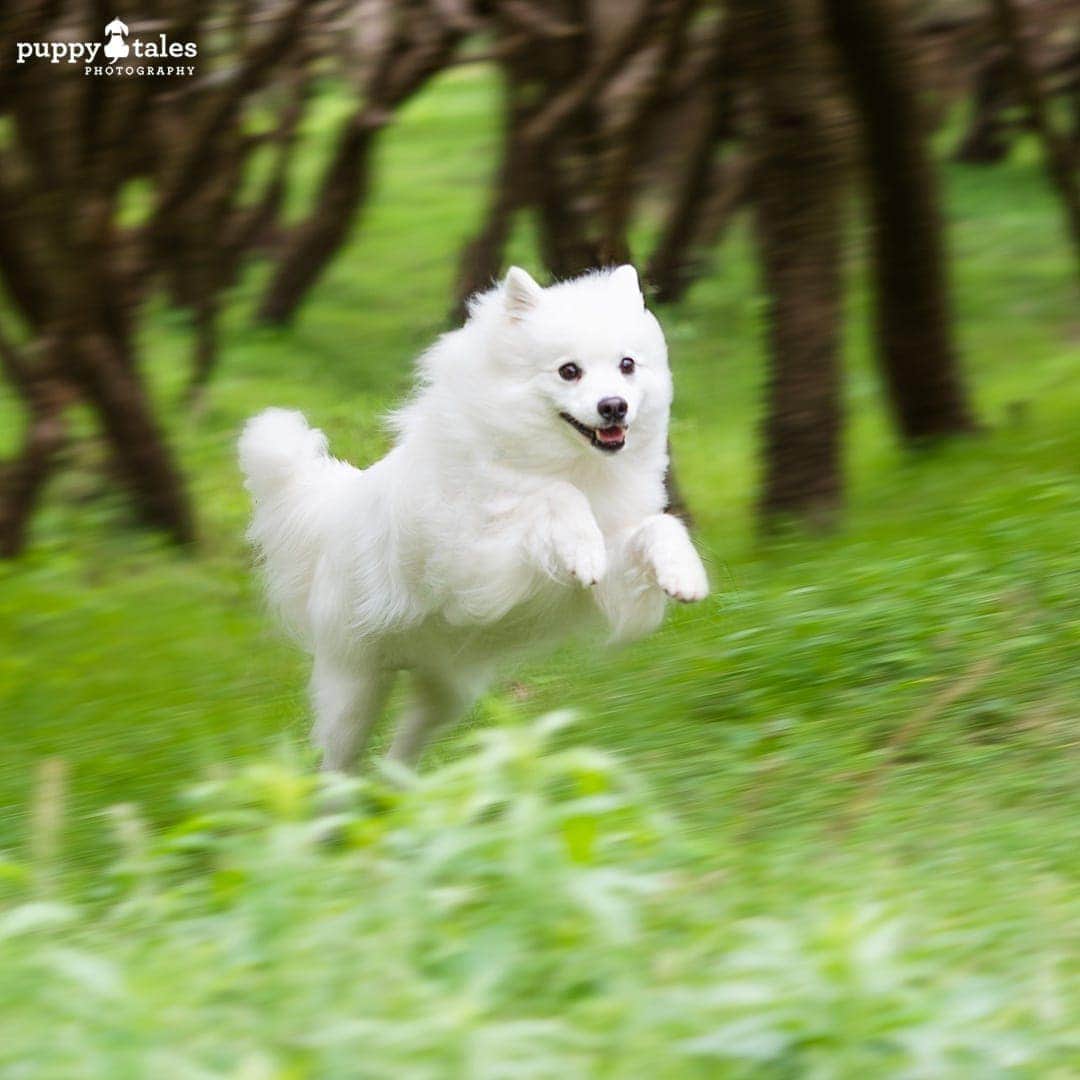
7 Technical (But Never Dull) Considerations
Pst! Want to know how to capture fleeting moments of doggo action and activity so effectively? I’m going to spill the beans. It does venture in the technical but once you’ve mastered that you can use your own sense of creativity and fun to experiment with the techniques and create different effects and outcomes.
1: Shutter Speed
As a rule of thumb the faster the shutter speed, the crisper the photo of a moving subject. But nothing is rarely this straightforward. Other factors come into play such as the amount of light available and the speed of the dog you’re photographing. A dark dull day will trump speed, because you need to lower the shutter speed in order to get correct exposure. A tiny toy poodle is not going to be as quick across the ground as a greyhound at full pace. So you’re likely to be able to ‘freeze’ the toy poodle with a slower shutter speed than that required for the greyhound.
As a general guide, to capture motion without blur you need a setting of 1/250 sec or faster. But even with a fast shutter, try to keep a steady hand as a shaky camera will result in a blurry photo no matter what.
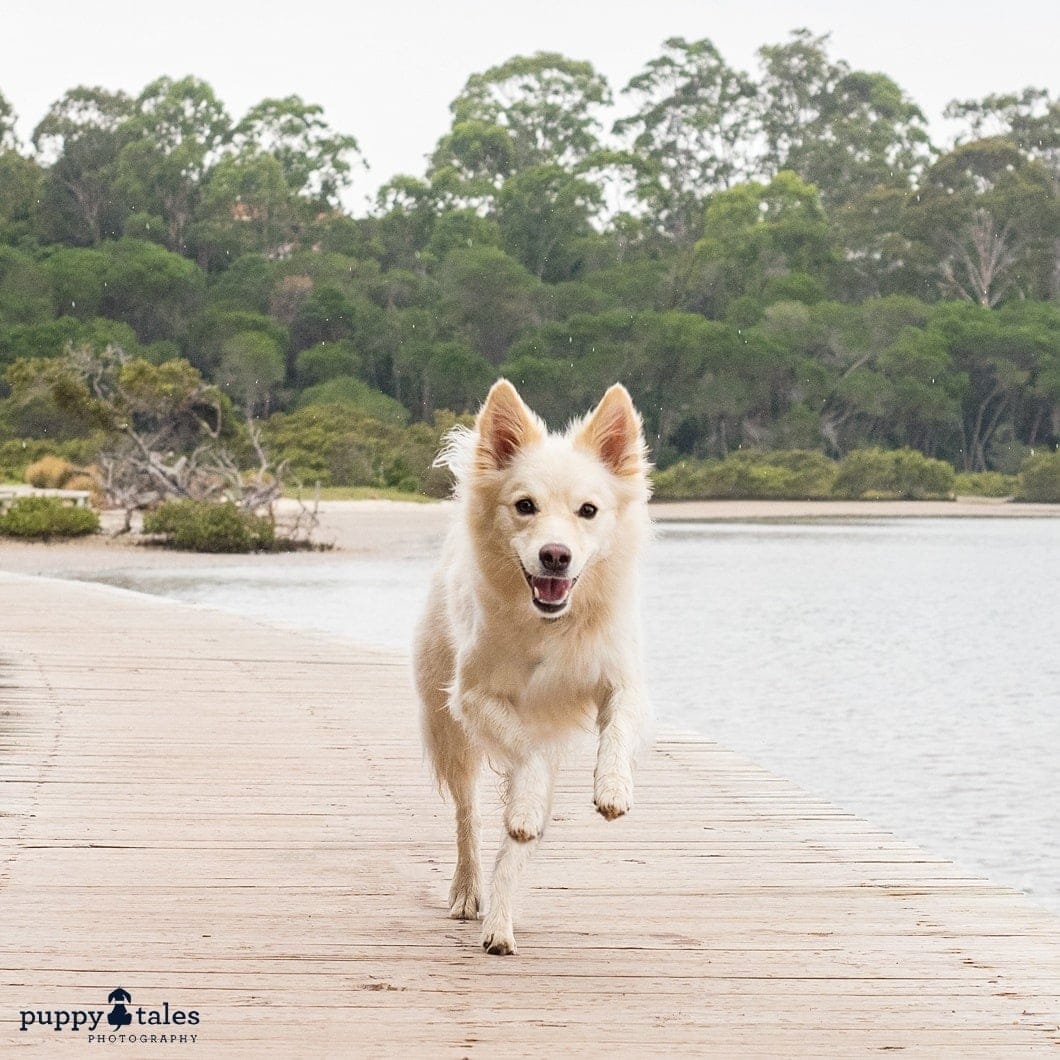
Also, some cameras and indeed the camera on a phone, will experience shutter lag. The delay from when you press the shutter at the perfect moment but the camera takes the picture a second or so lattercan be frustrating when capturing action. The only way round this is to anticipate the perfect moment and press the shutter moments earlier. To do this successfully means working with your camera to get used to its foibles and instinctively gauges the delay.
2: Auto-Focus Mode
Auto-focus or AF mode is the camera’s ability to track a moving subject and keep it’s focus as it moves. This is super useful when photographing a speedy subject like a dog is constantly changing its distance or direction relative to you.
With higher end cameras you have the ability for fine tuning customisations to their AF mode, so that you can configure the settings to best suit your needs, your subjects and your approach when photographing dogs in motion.
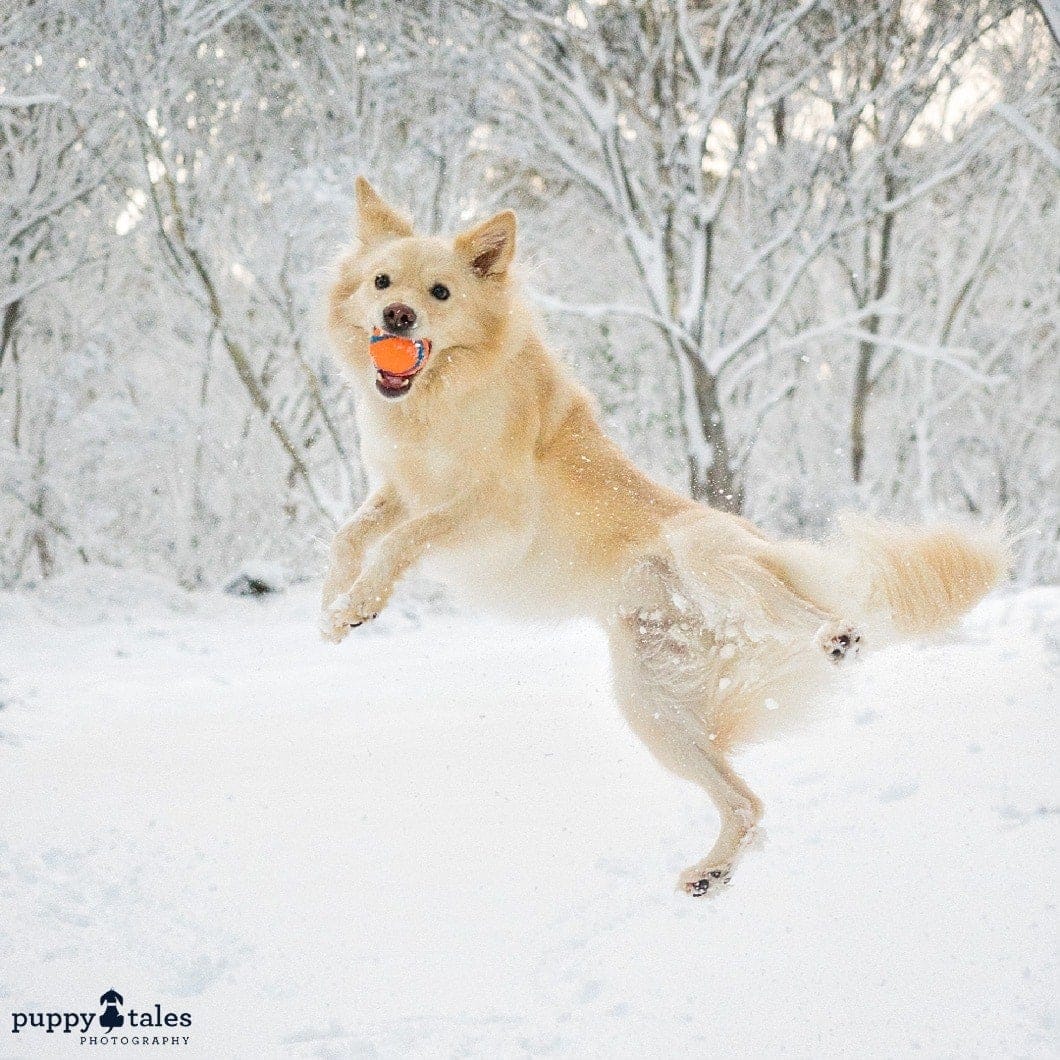
3: Drive Mode
Some moments are so fleeting that by the time your eye and brain has registered them, the action is over. Take a dog running towards you at full flight. You can see the general movement and direction of travel, but can you disconcern individual leg strides and movements? This is where drive mode comes in. In a continuous or high speed mode the camera will take a much quicker sequence of consecutive photos, much like a movie reel. This greatly increases the chances of one of them being truly magical. Taken at the point of full leg extension or the highest point of a leap over a log.
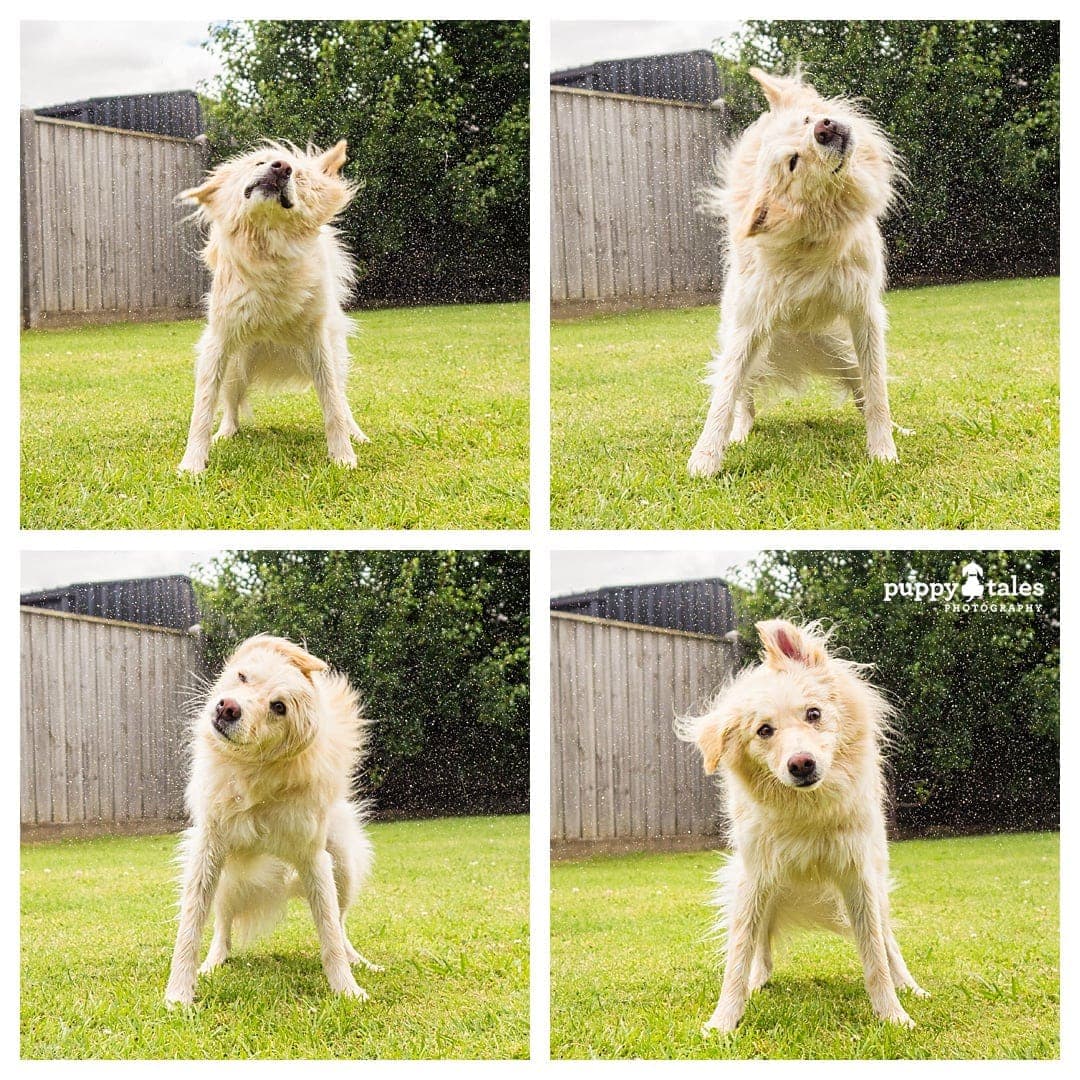
4: Focusing Points
If the dog runs along a predictable path, this makes it easier to track them. Activate your camera’s central focus point or focus group and then aim to keep your moving dog at the center of the frame for a sharp photo. If you have a dog that loves to chase their ball then you can use throwing that ball towards where you are positioned with your camera to get a predictable path that your dog will run.
For more random movements, like dogs playing and chasing one another, switch to multiple focus modes or a group of focus points. This allows the camera to do the heavy lifting by picking up and tracking the dog.
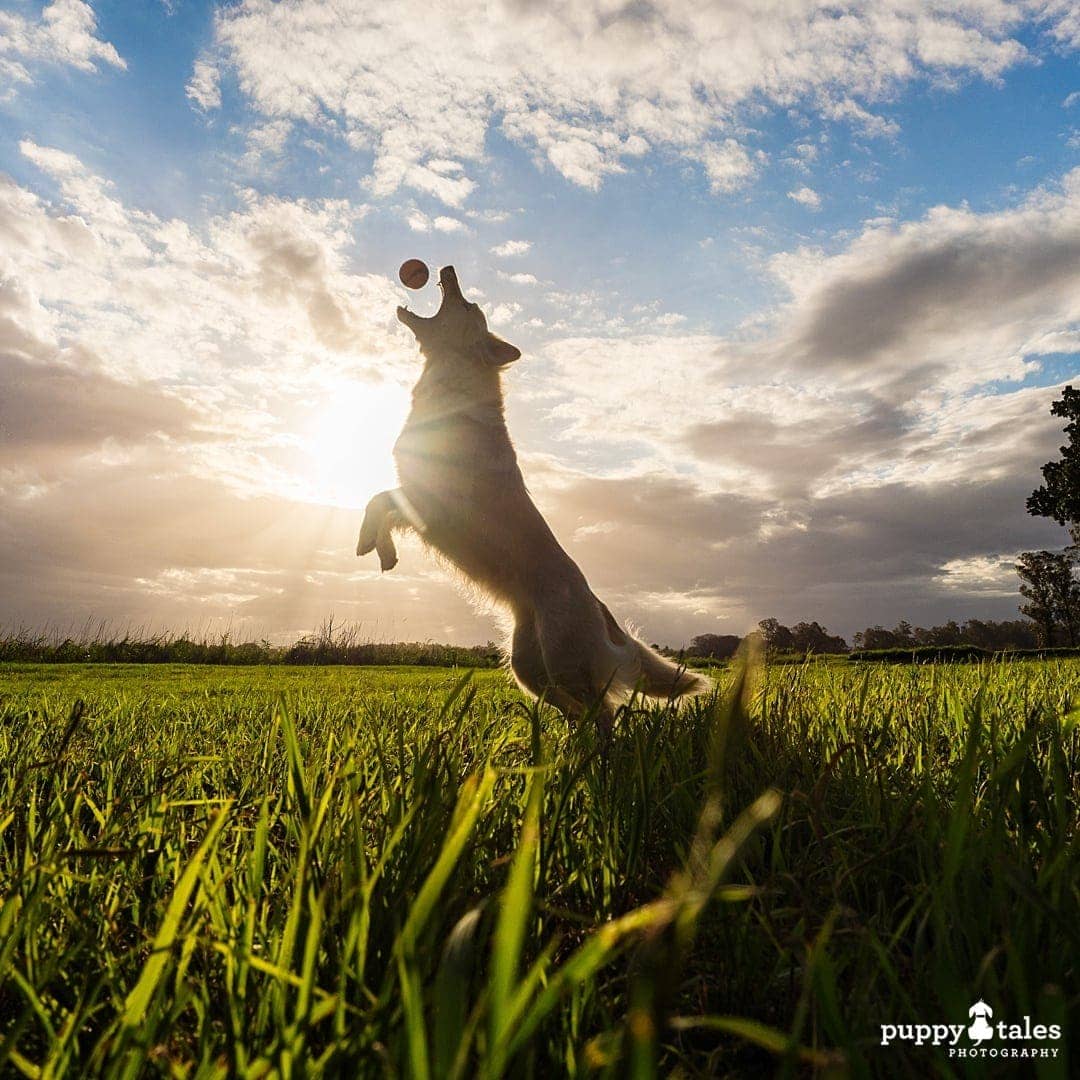
5: Focus
Chose the most important part of the dog to be in focus. Close up, this is their eyes; at a distance it’s the dog’s face. If your camera doesn’t have good or fast enough tracking in Auto Focus or they are moving to quickly straight towards you with your camera for the auto-tracking, try pre focussing on a spot that the dog will run through which is where you’ll release the shutter.
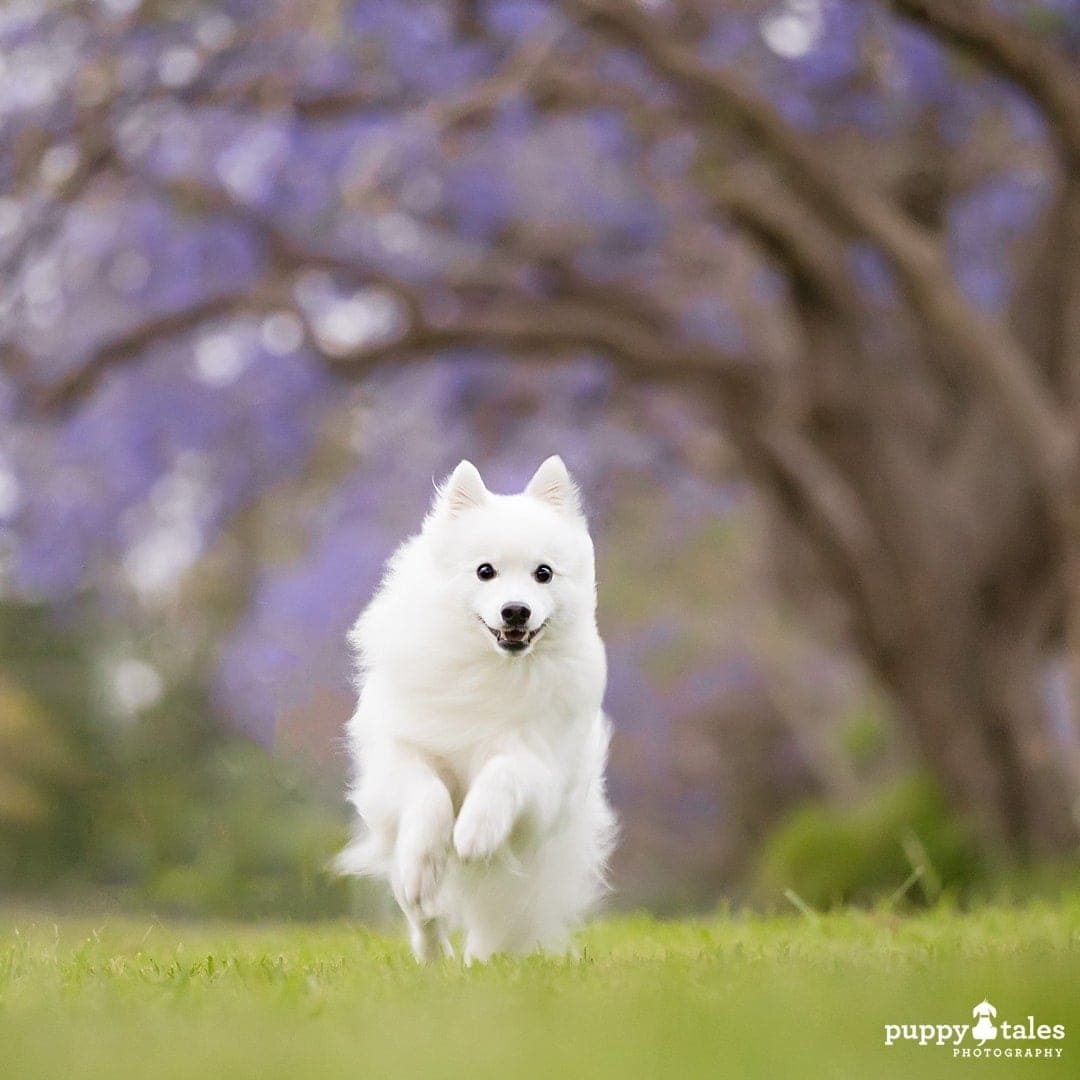
6: Distance to Subject
When practising your action dog photography, it can pay to give yourself the advantage by having the subject at a fully distance to you than normal. The greater the separation, the slower the object will move relative to you, buying you additional reaction time and making it easier for the camera to track.
The relative distances between you, the subject, and the background will also affect the final look of the photograph in terms of how much blur is in the background. For example, the closer the dog trees in the background, the greater the movement blur of the later when your dog is racing along and you’re panning.
A helpful tip when selection the background to surround your dog, is to choose a background that contrasts against the dog, making it easier for you and your camera to pick them out and accurately track.
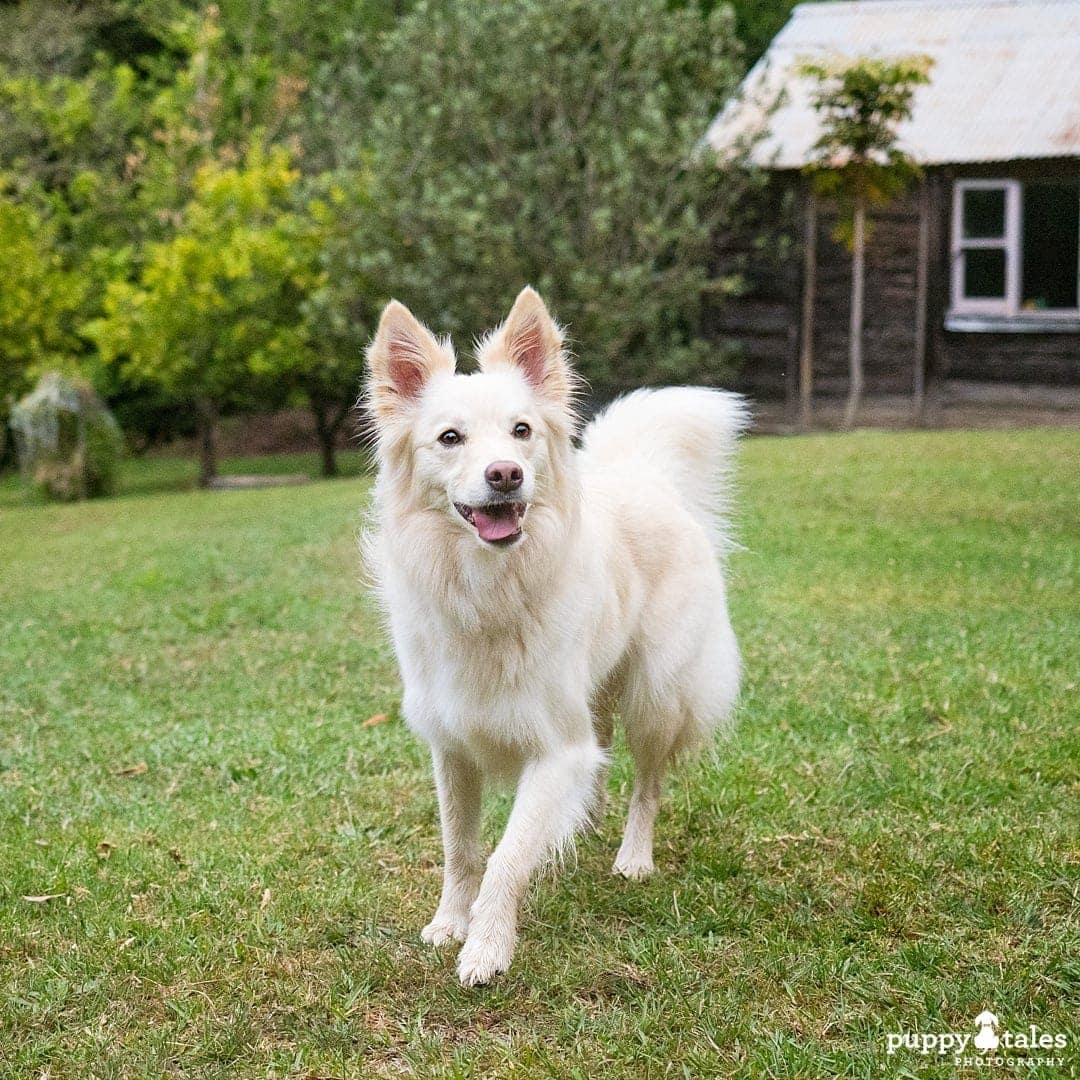
7: Aperture Selection
The larger the aperture setting the more room for error it gives. For example, going from f2.8 to f5.6 means double the depth area in the photograph that is in focus. If your focus on the dog’s eyes is slightly off, this larger aperture setting has a more forgiving drop off and you could still end up with a good photo. The offset here is separating your dog from its background – which a smaller aperture setting does.
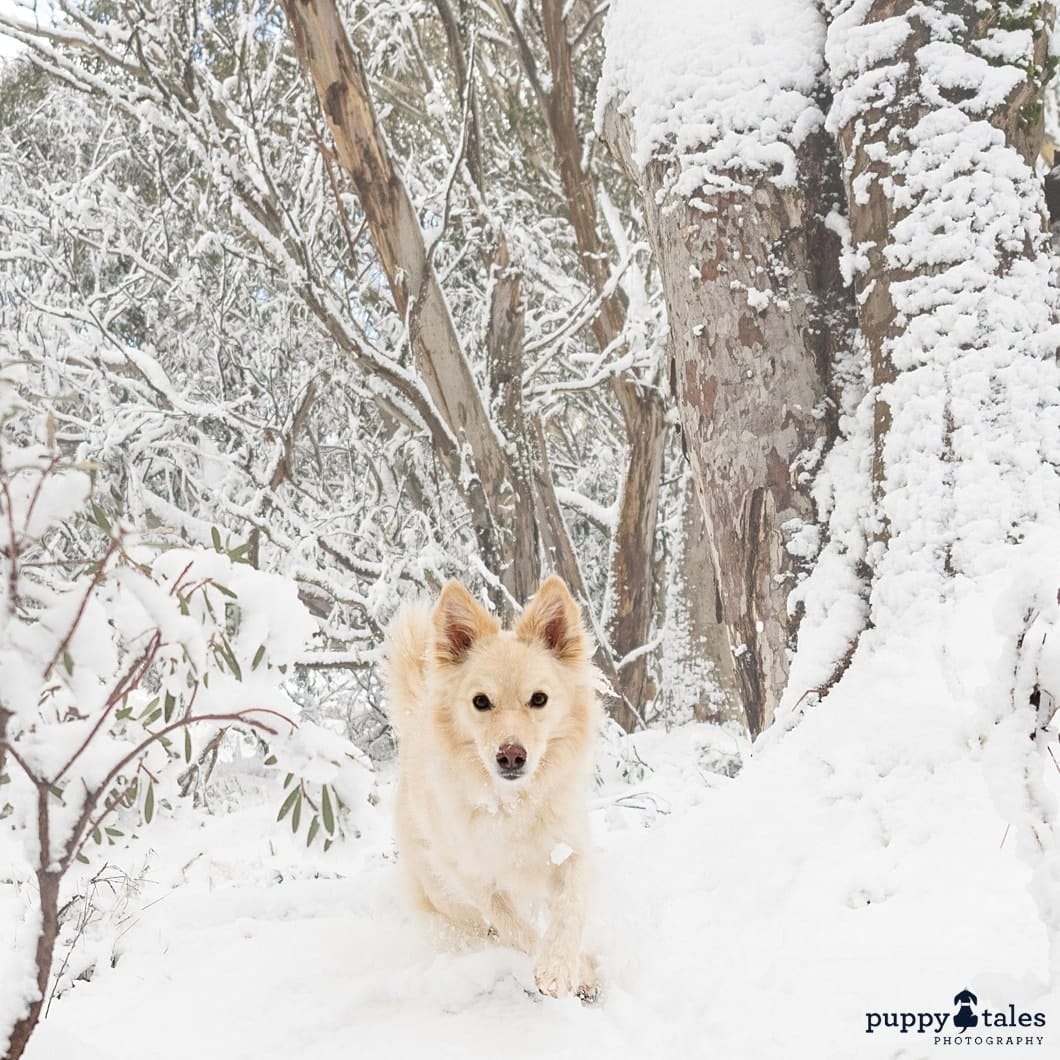
8: Camera Choice
Action photography is one type of dog photography where the results you achieve are going to impacted by the features and capabilities of the camera and lens choices you make. The ability to change settings like the auto focus/tracking and shutter speed, and selecting a ‘faster’ lens (where the minimum aperture is lower) will enable you to adapt your gear to capture action dogs in a wider variety of scenarios.
